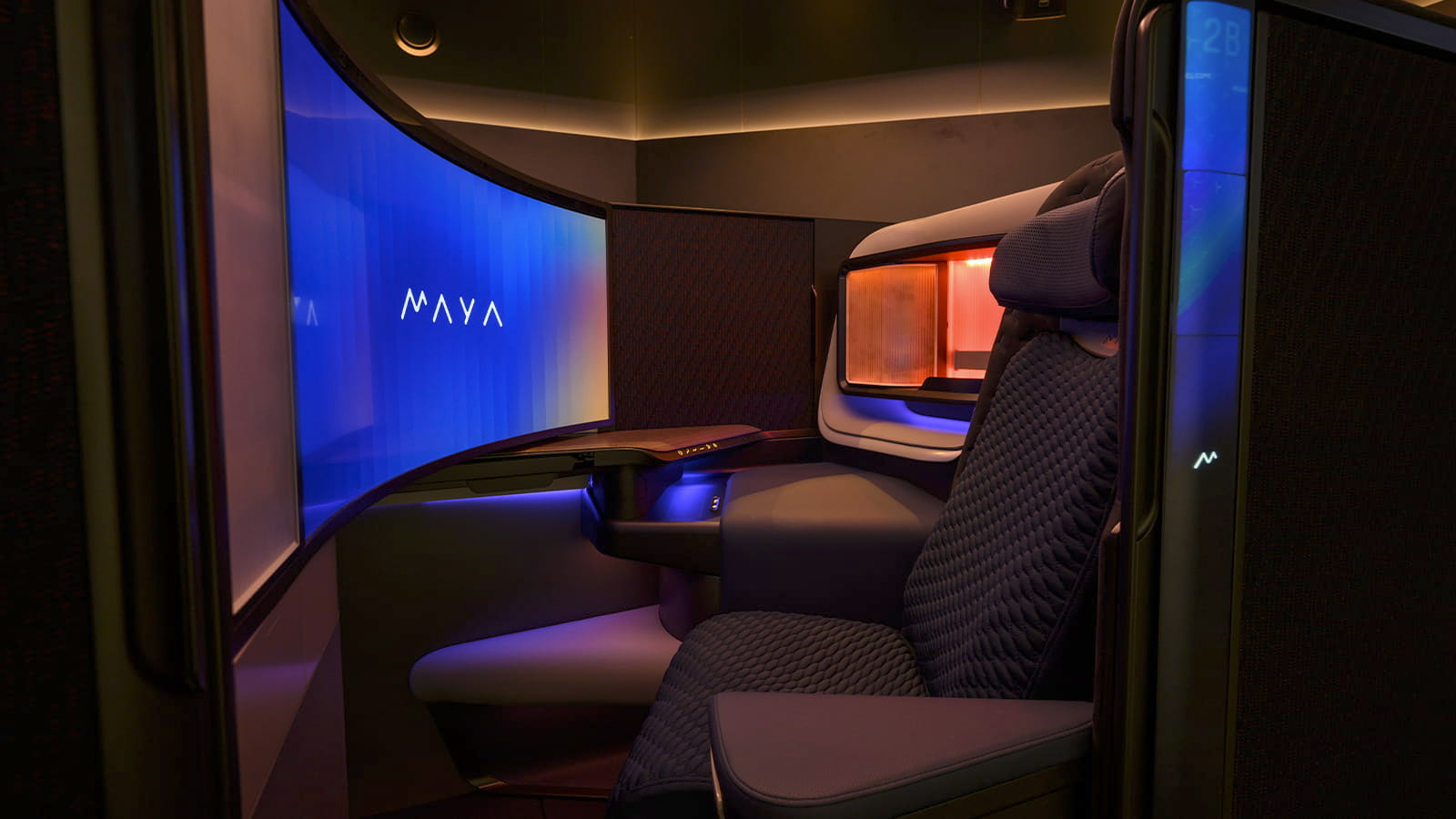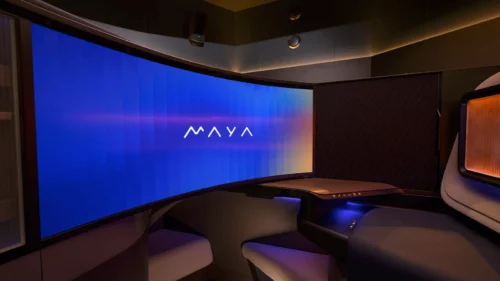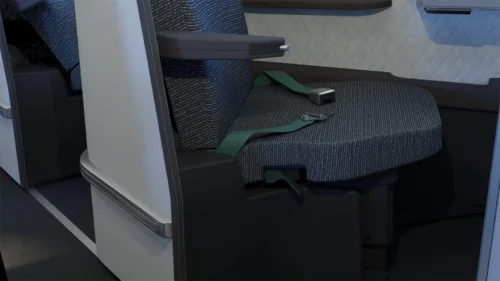Bare-bones vs IMAX in the sky: the future of business class seats is diverging
Links on Head for Points may support the site by paying a commission. See here for all partner links.
Comments about new airline business class seat launches on Head for Points often suggest that “all business class seats” are the same and that “innovation is over”.
That’s not entirely wrong. In the last decade or so, we’ve seen the vast majority of airlines and seat manufacturers adopt standard features such as direct aisle access, doored suites, 4K screens and Bluetooth connectivity.
The days of substantial differences in business class cabins, when some airlines offered direct aisle access whilst others stacked passengers eight abreast, are largely over. Less competitive seats are being phased out by airlines such as British Airways, Emirates and Lufthansa, albeit perhaps not as quickly as passengers would like. (Don’t expect the British Airways Gatwick fleet to get decent seats until the aircraft are scrapped.)
Look down any business class cabin and you’ll likely see one of two configurations – herringbone seats angled towards the window or alternating staggers. That’s because these are the most efficient use of cabin space, maximising both seat density and personal space in a world where direct aisle access is essential, rather than optional.
That’s not to say the seatmakers aren’t innovating. At Aircraft Interiors Expo in Hamburg this year, Collins Aerospace and Stelia Aerospace displayed two very different future seat types showcasing how they are trying to give airlines more choice when it comes to business class seating.
IMAX in the sky
At one end of the spectrum you have a new seat concept called MAYA developed by Collins Aerospace and in-flight entertainment supplier Panasonic Avionics.
Whilst not yet a fully certificated seat – so it does not have the necessary safety clearances to be installed – the two were pitching it as an advanced concept that could be brought to market within a year or two.
Billed as the “future of premium air travel”, the most visible innovation is the curved, 45″ OLED display from Panasonic. This 21:9 aspect ratio screen would allow ultrawide CinemaScope films to fill the full screen with no black bars, a first on board an aircraft.
In order to accommodate the huge screen, Collins invited Panasonic to join design discussions from the outset rather than simply pulling them in as a supplier further along the design stage.
Ed Dryden, president of Interiors at Collins Aerospace, says that
“Historically, and currently, products are designed in isolation. At Collins Aerospace Interiors we have been focused on shifting that paradigm and actually developing solutions rather than just products.”
All too often, in-flight entertainment screens look tacked-on to a business class seat design, a bit like plonking a TV on a table. With MAYA, the seat was designed around the unique curved screen to deliver an experience more akin to going to the cinema.
According to Ken Sain of Panasonic Avionics:
“It is seamlessly integrated into a reverse herring-bone business suite. Its three-times larger than today’s typical business class screens.”
The sheer size of the screen means you can also use it for multi-tasking. You could watch content in a 16:9 aspect ratio, with the remainder of the screen used for things such as the in-flight map, aircraft cameras or even gaming.
Whilst the seat itself is a more conventional herringbone, MAYA is clearly a fully specced flagship product designed to wow. It could find a home at an airline where customer experience is king.
On the other hand ….. the bare necessities
At the other end of the spectrum you have the Opera Essential seat, on offer from Airbus-owned Stelia Aerospace and pictured above.
As the name suggests, this is a bare-boned lie-flat business class seat that it is calling “the lightest seat offering premium passenger experience”.
Why is ‘lightest’ a selling point? With an increasing focus on sustainability and fuel burn, airlines are keen to reduce the weight of business class seats that can often weigh into the hundreds of kilos. Over the lifetime of an aircraft, every kilo saved can save hundreds if not thousands of tons of fuel and, as a result, CO2 emissions.
We’re already seeing weight play a part in airline seat selection. Finnair’s new no-recline AirLounge seat saves a substantial amount of weight by removing all electrically actuated mechanical parts. It opts instead for a larger flat-bed seat that you can ‘recline’ through the use of pillows, as you would at home on the sofa.
So just how light can a seat get? Stelia is targetting a weight of 65kg per seat – 30% lighter than the standard Opera business class seat for single aisle aircraft.
A number of compromises are made to achieve this weight. For a start, the Essential ditches the door and in-flight entertainment screen altogether. According to independent aviation journalist John Walton this saves “1.5 tonnes of wiring and other associated weight that comes with them.” Doors can add eight to ten kilos each.
(Are passengers really willing to go without IFE? Probably not. In reality these seats are offered to airlines as a basic model but with the option to add back any features which are required.)
Further weight savings are achieved by removing the electronic recline system and replacing it with a manually actuated lever. Some of the heaviest components in an aircraft seat are electrical motors, capable of reclining and unreclining a seat with an adult human still sitting on it. Removing these hardwearing items not only saves on weight but also simplifies maintenance, further reducing costs.
Unlike Finnair’s AirLounge, Stelia has retained the recline mechanism but turned it into a manual system. Pull a lever – a bit like on a car – and the seat will slide forward and flatten. As John Walton writes,
“It’s a matter of pulling up on the lever to slide the seat to the reclined (or fully flat) position you desire, then releasing the lever. Returning to the seated position from flat, there’s a bit of a pilates core muscle trick to finding the precise point at which to place your body weight on the seat in order to activate the slide of the kinematics, but this took only a couple of tries and then we had it down pat.”
Conclusion
The MAYA and Opera Essential aren’t competitors: both are solutions to problems at vastly different ends of the market, with Collins targetting premium, full-service airlines and Stelia the cost-conscious low(er) cost carriers.
It’s easy to imagine a world where both are flying regularly. The Opera Essential could be perfect for an increasing number of long haul low cost airlines such as IndiGo. It has recently announced its intention to launch long haul flights from India with the A350.
It will be interesting to watch which airlines – if any – decide to adopt one of these new seats.







 Rhys
Rhys 





Comments (75)